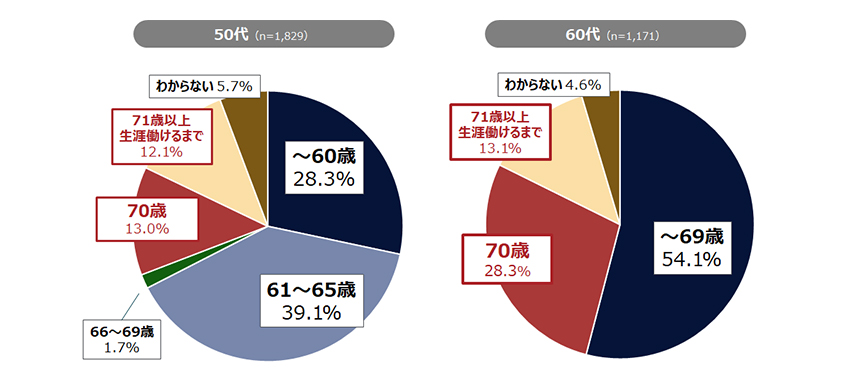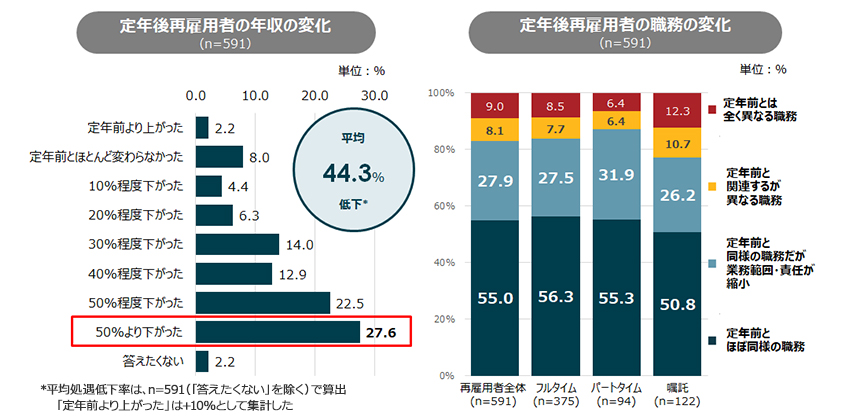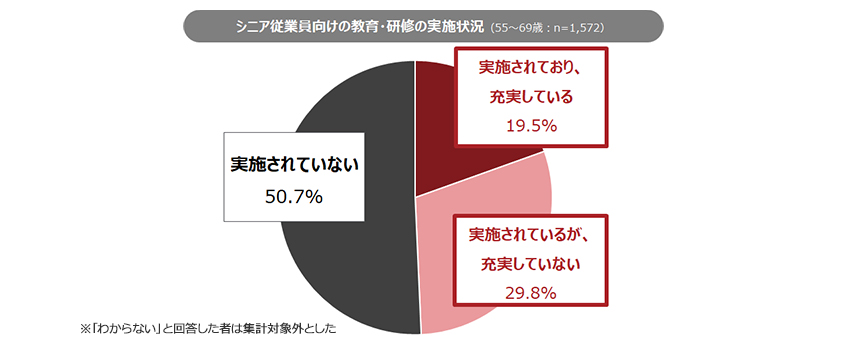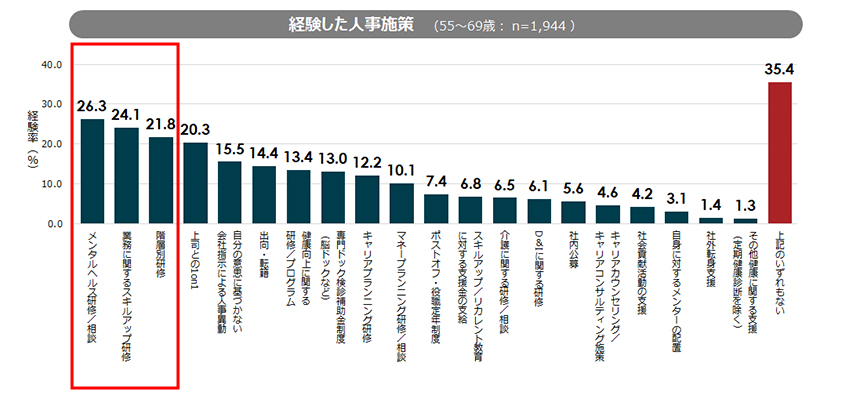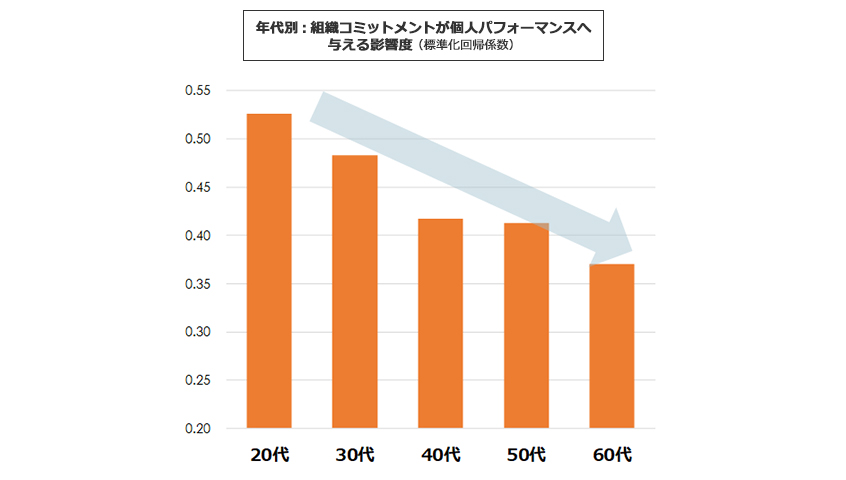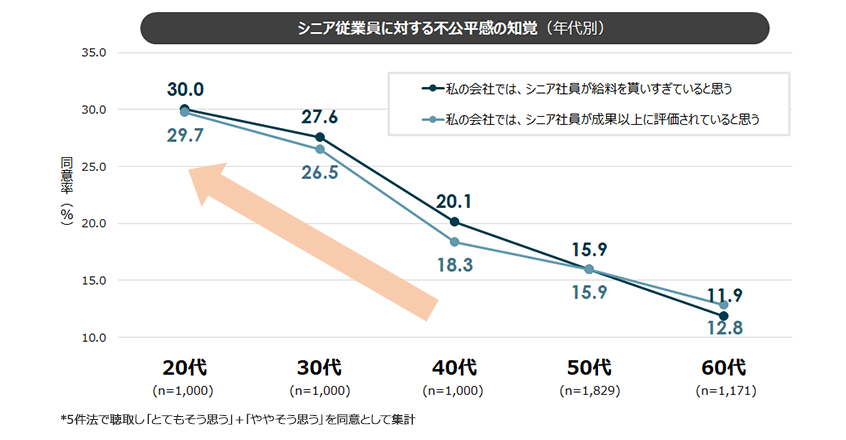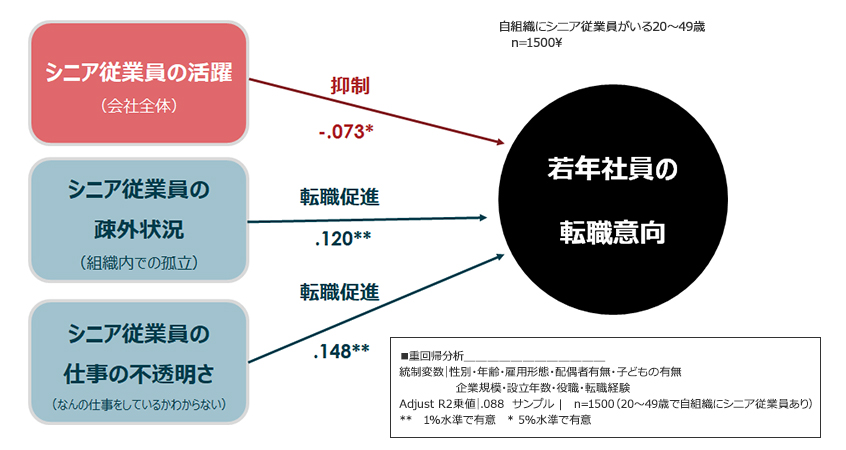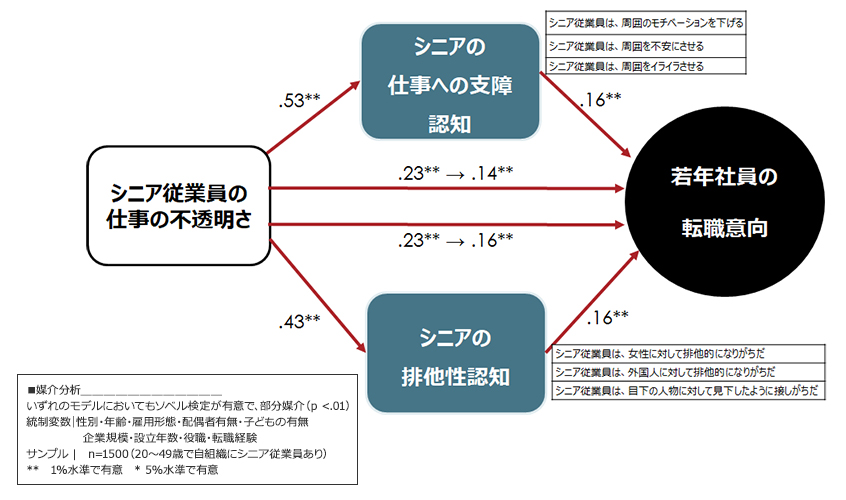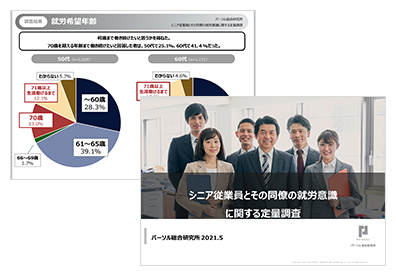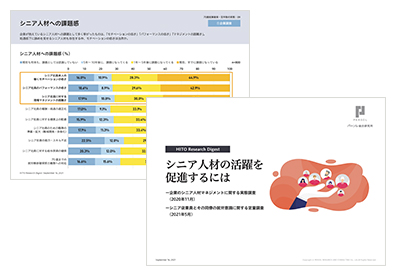Release Date 06/02/2021
※This article is a machine translation.
Overview
| Name | Quantitative survey of employment attitudes among senior workers and their colleagues |
|---|---|
| Objectives | ・To clarify the actual situation of senior employees in the workplace and the actual situation of personnel policies for senior employees ・To explore the characteristics of personnel management that affect the performance of senior employees ・To explore the impact of the working conditions of senior employees on their younger colleagues |
| Target | Survey objectives ・To clarify the actual situation of senior employees in the workplace and the actual situation of personnel policies for senior employees ・To explore the characteristics of personnel management that affect the performance of senior employees ・To explore the impact of the working conditions of senior employees on their younger colleagues Survey targets [Common conditions] ・Area of residence: Nationwide / Gender: Male and female ・Company size: 100 or more employees / Excluding primary industry / Japanese companies only Group A: Senior employees (3,000 people) Employment status: 2,409 full-time employees, 375 re-employed after retirement (full-time), 94 re-employed after retirement (part-time), 122 re-employed after retirement (contract) Age: 50-54 years old (1,056 people: 365 men, 691 women) 55-59 years old: 773 (male: 385, female: 388) 60s: 1,171 (male: 750, female: 421) Group B: Young employees: 3,000 Employment status: Full-time employees (excluding directors, representative directors and presidents) Age: 20s-40s, 1,000 people each (500 men and 500 women each) Total sample size: 6,000 people |
| Period | January 6 - 12, 2021 |
| Method | Internet quantitative survey using survey company monitors |
| Organization | Persol Research and Consulting |
Report PDF
Survey Results Summary
Over 40% of those in their 60s want to work until they are 70 or older
When senior workers employed by Japanese companies were asked “How old do you want to be when you retire?”, 25.1% of those in their 50s and 41.4% of those in their 60s answered “I want to work until I am 70 or older”.
Figure 1: Desired age to retire
The average annual income of re-employed workers decreases by 44.3
Looking at the treatment of re-employed senior employees, more than half of re-employed workers have the same job as before retirement, but their annual income has decreased regardless of performance. On average, it has decreased by around 44.3% compared to their annual income before retirement.
Figure 2: Changes in annual income and job duties of re-employed workers after retirement
More than half of companies do not provide education or training for senior employees
When it comes to the implementation of education and training for senior employees, half of the companies surveyed said that they do not provide any. Of those that do, the top three types of education and training that are commonly provided were “mental health training/counselling”, “skill-up training related to work”, and “training by job level”.
Figure 3: Implementation of education and training for senior employees
Figure 4: Personnel policies experienced by senior employees
The key to revitalizing senior employees is “transition readiness”
The focus was on “transition readiness” and “prospects for success within the company” as factors that promote the revitalization of senior employees. The analysis showed that “transition readiness” promotes “performance”, “proactivity in changing job roles” and “learning behavior” among senior employees, while “prospects for success within the company” also promotes “performance” and “organizational commitment”. On the other hand, it was also clear that “organizational commitment” to the company did not lead to individual performance as employees got older.
Figure 5: The impact of change adaptability on the revitalization of senior employees
Figure 6: Summary of ”change adaptability and prospects” for success within the company
Figure 7: The relationship between organizational commitment and performance
Younger employees feel more unfairly treated by senior employees in their company
Next, we analyzed the impact that senior employees have on those around them (particularly younger employees within the company).
First, when we asked whether they felt that there was any unfairness in the treatment of senior employees within their company, 30% of employees in their 20s felt that senior employees were “being paid too much” or “being evaluated more highly than their performance deserved”. The percentage of employees who felt this way tended to be higher the younger the employee.
Figure 8: Perceived unfairness towards senior employees (by age)
The work performance of senior employees affects the job-changing intentions of younger employees
Furthermore, when we looked at the impact of the work performance of senior employees on the job-changing intentions of younger employees, we found that the younger employees' intentions to change jobs were higher in workplaces where the senior employees were isolated within the organization and where it was unclear what work they were doing. Conversely, in workplaces where the senior employees were active, the younger employees' intentions to change jobs were suppressed.
Figure 9: The impact of the work situation of senior employees on the job-changing intentions of younger employees
Uncertainty about the work of senior workers increases ageism
Furthermore, the uncertainty about the work of senior workers increases young employees' prejudice against senior workers (ageism). This prejudice in turn increases young employees' intention to change jobs.
Figure 10: Relationship between the uncertainty about the work of senior workers and young employees' intention to change jobs
Analysis Comments
With the implementation of the revised Act on Stabilization of Employment of Older Persons in April 2021, it became a legal obligation to make efforts to ensure employment opportunities until the age of 70. In response to this, many companies are responding by re-employing their employees after they reach retirement age.
In this context, the results of this survey revealed that the treatment of senior employees declines significantly after re-employment. Despite their duties remaining the same, their annual income is cut in half. This unreasonable decline in treatment risks violating the principle of equal pay for equal work, and it is time to reconsider the blanket treatment of employees based on their age. However, senior employees are still not the target of training or education, and it is difficult to raise the priority of measures.
In addition, the survey also suggested that the inactivity of senior employees can lead to younger employees leaving the company (intergenerational peer effect). In recent years, the issue of young employees leaving major companies has often been raised, but it is important to recognize that this issue is inextricably linked to the problem of senior employee inactivity.
Figure 11: Intergenerational peer effect of senior employee inactivity
In addition, it was found that as people get older, their “commitment to the company” becomes less and less linked to performance, while their “ability to adapt to change” in preparation for organizational and environmental change becomes more important. In order to improve the “ability to adapt to change” of middle-aged and older employees, it is necessary to “(1) take stock of internal company duties and positions and make positions more visible (disclosure of internal company duty information and public recruitment)” and “(2) make individual careers more visible,” and to “(3) strengthen the company's internal human resources matching function.” At the same time, we want to prevent the stagnation of human resources within companies by making employment boundaries more flexible, for example by allowing employees to work part-time jobs outside the company or by re-employing former employees.
The issue of the “inactive” group of senior employees is one that Japanese companies have traditionally struggled with. Rather than just taking superficial measures to comply with changes in the law, it will be necessary to take fundamental measures, such as reviewing the entire company-wide personnel system.
*When quoting this survey, please clearly indicate the source.
Example of source citation: Persol Research and Consulting “Quantitative Survey on the Work Attitudes of Senior Employees and Their Colleagues”
おすすめコラム
follow us
メルマガ登録&SNSフォローで最新情報をチェック!

